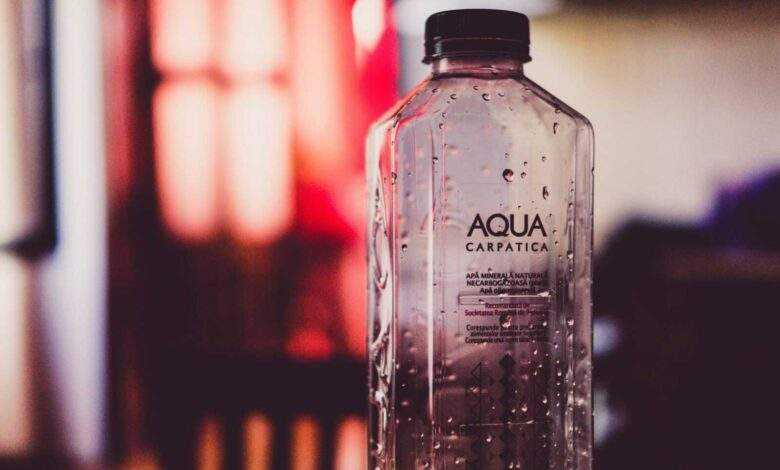Banish the Bottled Beast: Reusable Water Bottle Options for Every Need

Table of Contents
Imagine the impact of every plastic water bottle you’ve ever used still existing on the planet. Reusable water bottles offer a sustainable alternative that benefits both you and the environment.
Welcome to the ultimate guide on banishing the bottled beast! In a world grappling with plastic pollution, finding sustainable solutions like reusable water bottles isn’t just a choice—it’s a necessity. Join us as we explore the diverse world of reusable water bottles, from stainless steel to collapsible options, empowering you to make eco-conscious choices without sacrificing convenience or style.
Importance of Using Reusable Water Bottles:
Switching to reusable water bottles helps reduce plastic waste, conserves resources used in manufacturing, and promotes healthier hydration habits.
Environmental Impact:
Plastic pollution poses a significant threat to marine life and ecosystems. By choosing reusable bottles, individuals can contribute to reducing plastic waste and protecting natural environments.
Government Initiatives and Awareness:
Government policies and public awareness campaigns play a crucial role in promoting sustainable practices like using reusable water bottle. These initiatives encourage individuals and businesses to minimize plastic consumption and adopt eco-friendly alternatives.
1. Stainless Steel Water Bottles
Durability and Insulation
Stainless steel water bottles are renowned for their durability, making them suitable for rugged outdoor activities and daily use. They are resistant to dents, scratches, and corrosion, ensuring longevity even in harsh conditions. Additionally, stainless steel bottles feature excellent insulation properties, keeping beverages hot or cold for extended periods, which is ideal for users who require temperature maintenance throughout the day.
BPA-Free and Health Safety
One of the primary advantages of stainless steel bottles is their BPA-free composition. BPA (Bisphenol A) is a chemical found in many plastics that can leach into beverages and pose health risks. By opting for stainless steel, consumers avoid exposure to harmful chemicals, ensuring safe and clean hydration options. This feature is particularly important for individuals concerned about health and wellness, as stainless steel provides a non-reactive and neutral taste experience.
Brands and Examples
Several reputable brands specialize in high-quality stainless steel water bottles known for their performance and reliability. Hydro Flask offers a range of insulated stainless steel bottles with innovative features like sweat-proof exteriors and powder-coated finishes for better grip and durability. Klean Kanteen is another popular brand known for its eco-friendly practices and diverse product lineup, including single-wall and insulated stainless steel bottles suitable for various lifestyles and activities.
2. Glass Water Bottles
Purity and Taste
Glass water bottles provide a pure and clean taste without retaining flavors or odors, making them an excellent choice for individuals who prefer a pristine drinking experience. Unlike plastic containers, glass does not impart any chemicals or aftertaste to beverages, ensuring that water and other liquids maintain their original flavor profiles. This feature makes glass bottles particularly appealing for those who enjoy drinking water without any additional taste influences.
Durability Features
Although glass is inherently fragile, modern glass water bottles are designed with durability in mind. Many models come with protective silicone sleeves or rubberized coatings that enhance impact resistance and reduce the risk of breakage. These added features not only safeguard the bottle from accidental drops but also provide a comfortable grip and prevent condensation buildup on the exterior, enhancing user convenience and usability.
Eco-Friendliness and Recycling
Glass water bottles are highly sustainable and eco-friendly due to their recyclable nature. Unlike plastic bottles that contribute to environmental pollution, glass can be recycled indefinitely without losing its quality or purity. By choosing glass bottles, consumers support recycling efforts and reduce the demand for new raw materials, thereby conserving energy and minimizing carbon emissions associated with production processes.
3. BPA-Free Plastic Water Bottles
Lightweight and Versatility
BPA-free plastic water bottles combine lightweight construction with versatility, making them ideal for various activities and environments. These bottles are easy to carry during workouts, commutes, and outdoor adventures, offering convenience without compromising on durability or performance. Their lightweight nature ensures portability, allowing users to stay hydrated on the go without feeling burdened by heavy gear or equipment.
Safety and Health Considerations
The transition to BPA-free plastics addresses concerns about chemical leaching and potential health risks associated with traditional plastic bottles. BPA (Bisphenol A) and similar chemicals can leach into beverages, especially when exposed to heat or prolonged use, posing risks to human health. BPA-free plastics eliminate these concerns by utilizing alternative materials that do not release harmful substances, providing a safer and more reliable hydration option for consumers of all ages.
Design and Customization
BPA-free plastic water bottles come in a wide range of designs, colors, and sizes to suit individual preferences and lifestyles. Manufacturers offer innovative features such as ergonomic grips, leak-proof lids, and easy-open spouts to enhance user experience and functionality. These customizable options cater to diverse consumer needs, whether for sports and fitness enthusiasts seeking durable performance or professionals looking for sleek, portable hydration solutions.
4. Insulated Water Bottles
Temperature Retention
Insulated water bottles are designed to maintain beverage temperatures for extended periods, making them ideal for both hot and cold drinks. These bottles feature double-walled construction with vacuum insulation technology, creating a barrier that minimizes heat transfer and preserves drink temperatures. Whether enjoying a hot coffee on a winter morning or refreshing cold water during summer activities, insulated bottles ensure consistent beverage quality and comfort throughout the day.
Durability and Longevity
The robust construction of insulated water bottles enhances durability and longevity, allowing them to withstand daily wear and environmental conditions. Premium materials such as stainless steel or durable plastics ensure resilience against impacts, scratches, and rust, extending the bottle’s lifespan. Insulated bottles are designed for active lifestyles, offering reliable performance without compromising on aesthetics or functionality.
Ideal Uses and Activities
Insulated water bottles cater to a wide range of uses and activities, from outdoor adventures to daily commutes and travel. Their ability to keep beverages hot for up to 12 hours or cold for up to 24 hours makes them indispensable for individuals who prioritize hydration and comfort on the go. Whether hiking in rugged terrain, attending sports events, or working in a busy office environment, insulated bottles provide convenient access to refreshment without the need for frequent refills or temperature adjustments.
5. Collapsible Water Bottles
Portability and Space-Saving
Collapsible water bottles offer unmatched portability and space-saving benefits, making them ideal for travel, hiking, and everyday use. These bottles feature collapsible designs that reduce their size when empty, allowing them to fit easily into bags, backpacks, or pockets. This compact versatility ensures convenience and accessibility, enabling users to stay hydrated wherever they go without carrying bulky or cumbersome containers.
Material and Sustainability
Many collapsible water bottles are made from eco-friendly materials such as silicone or BPA-free plastics, emphasizing sustainability and environmental responsibility. These materials are lightweight yet durable, providing a balance between flexibility and strength for reliable performance in various conditions. By choosing collapsible bottles, consumers contribute to reducing single-use plastic waste and promoting reusable alternatives that support conservation efforts.
Practical Features
Collapsible water bottles are equipped with practical features that enhance usability and convenience during everyday use. Leak-proof seals, wide mouth openings for easy filling and cleaning, and integrated carabiner clips or handles for effortless carrying are common design elements. These features ensure functionality and reliability, allowing users to enjoy hydration without spills or inconvenience, whether at the gym, on a hike, or in transit.
6. Choosing the Right Reusable Water Bottle
Material Selection Guide
Selecting the right material for a reusable water bottle depends on individual preferences, lifestyle factors, and environmental considerations. Stainless steel offers durability and insulation, glass provides purity and taste preservation, while BPA-free plastics combine lightweight versatility with safety. Understanding these material characteristics helps consumers make informed decisions based on their specific hydration needs and sustainability goals.
Size and Capacity Considerations
Choosing the appropriate bottle size and capacity ensures adequate hydration throughout the day without unnecessary refills or bulkiness. Factors such as daily water intake, frequency of use, and portability requirements influence size selection. Smaller bottles are suitable for short outings or children, while larger capacities accommodate extended activities or high water consumption routines. Evaluating size and capacity preferences facilitates seamless integration of reusable bottles into daily routines and travel plans.
Lid Types and Features
Different lid types offer varying functionalities and convenience benefits tailored to user preferences and activity requirements. Screw-top lids provide secure closures suitable for outdoor adventures, flip-top lids offer quick access for active lifestyles, and straw lids facilitate effortless drinking during workouts or leisure activities. Considering lid features such as leak-proof seals, easy-open mechanisms, and ergonomic designs ensures compatibility with personal preferences and enhances overall user satisfaction.
7. Benefits of Using Reusable Water Bottles
Health and Wellness Benefits
The consistent use of reusable water bottles promotes hydration as a cornerstone of health and wellness. Accessible hydration throughout the day supports bodily functions, maintains energy levels, and enhances cognitive performance. By encouraging regular water intake, reusable bottles contribute to overall well-being and hydration balance, fostering healthier habits and sustained vitality.
Cost-Effectiveness
Investing in reusable water bottles offers long-term cost savings compared to purchasing single-use plastic bottles or disposable alternatives. Initial investments in durable, high-quality bottles amortize over time through reduced spending on bottled water and environmental impact mitigation. Economic benefits extend to minimizing waste disposal costs and supporting sustainable consumption practices aligned with personal and global conservation goals.
Environmental Impact
The adoption of reusable water bottles significantly reduces plastic waste generation and environmental pollution. By replacing disposable containers with reusable alternatives, consumers minimize resource extraction, manufacturing emissions, and landfill accumulation associated with single-use plastics. Sustainable consumption choices contribute to environmental stewardship, ecosystem preservation, and global efforts to combat plastic pollution, promoting a cleaner, healthier planet for current and future generations.
8. Cleaning and Maintenance Tips
Cleaning Methods
Effective cleaning methods ensure hygiene, prolong bottle lifespan, and preserve beverage quality. Handwashing with mild soap and warm water removes residue, odors, and bacteria from
bottle interiors and exteriors. Dishwasher-safe components simplify cleaning routines, offering convenience and efficiency without compromising material integrity or functional features. Periodic deep cleaning with vinegar or baking soda eliminates stubborn stains and enhances sanitation for optimal bottle performance.
Dishwasher Safety
Understanding dishwasher compatibility ensures safe and efficient cleaning of reusable water bottles without compromising material integrity or functional features. Check manufacturer guidelines for dishwasher-safe materials and components, including lids, seals, and insulation technologies. Selecting dishwasher-safe bottles simplifies maintenance routines, streamlines cleaning processes, and promotes convenient hygiene practices suitable for diverse lifestyles and daily hydration routines.
Maintenance Practices
Regular maintenance practices preserve bottle functionality, appearance, and performance capabilities over time. Inspect seals, lids, and exterior surfaces for signs of wear, damage, or deterioration, addressing minor issues promptly to prevent leaks or performance issues. Periodically assess insulation effectiveness, particularly for insulated bottles, to maintain temperature retention properties and optimize beverage enjoyment. Adopting proactive maintenance habits enhances bottle longevity, user satisfaction, and sustainable use practices aligned with environmental stewardship principles.
9. Personalizing Your Water Bottle
Customization Options
Personalizing water bottles with creative designs, decals, or accessories reflects individual preferences, styles, and identities. Explore customization opportunities through online retailers, specialty stores, or DIY crafting projects to transform plain bottles into personalized accessories or functional art pieces. Customized bottles serve as unique gifts, promotional items, or personal mementos, enhancing aesthetic appeal, sentimental value, and user satisfaction across diverse consumer demographics and occasions.
DIY Upgrades
Incorporating do-it-yourself (DIY) upgrades enhances water bottle functionality, aesthetics, and personalization possibilities. Explore DIY projects such as adding silicone grips, decorative decals, or custom paint finishes to customize bottle appearance and ergonomic features. DIY upgrades provide creative outlets for self-expression, craftsmanship, and environmental stewardship by repurposing existing bottles or enhancing durability and usability through innovative design enhancements. Embrace DIY culture to personalize bottles, inspire creativity, and support sustainable consumption practices aligned with personal preferences and environmental values.
Sustainability in Design
Embracing sustainable design principles promotes eco-conscious choices and environmental responsibility in water bottle selection. Choose brands committed to using recycled materials, minimizing environmental impact, and supporting sustainable sourcing practices throughout production and distribution processes. Sustainable design features include eco-friendly materials, minimalistic packaging, and product lifecycle considerations that prioritize resource conservation, waste reduction, and carbon footprint mitigation. Aligning consumer choices with sustainable design ethos fosters environmental stewardship, supports circular economy initiatives, and promotes global sustainability efforts for a healthier planet and future generations.
10. Tips for Responsible Disposal and Recycling
Recycling Guidelines
Educate consumers on proper disposal and recycling practices for reusable water bottles to minimize environmental impact and promote circular economy principles. Follow local recycling regulations and guidelines for glass, stainless steel, and BPA-free plastics to facilitate recycling initiatives and maximize material recovery. Support recycling programs, collection facilities, and sustainable waste management practices to reduce landfill waste, conserve natural resources, and mitigate environmental pollution linked to disposable plastic consumption.
Donation and Reuse Options
Encourage donation and reuse of reusable water bottles to extend product lifespan, support charitable initiatives, and reduce material waste in communities. Donate gently used bottles to local shelters, schools, or nonprofit organizations promoting sustainable living and hydration access. Participate in bottle exchange programs, community recycling events, or environmental clean-up efforts to foster reuse, resource sharing, and community engagement through responsible consumption practices. Embrace collaborative efforts to promote reuse and circular economy principles, enhancing social responsibility, environmental stewardship, and sustainable development goals worldwide.
Upcycling Ideas
Explore creative upcycling ideas for repurposing used water bottles into functional, decorative, or innovative products. Transform empty bottles into DIY planters, storage containers, or artistic installations through innovative crafting projects and creative reuse concepts. Embrace upcycling as a sustainable design practice to reduce waste, inspire creativity, and promote environmental awareness through practical applications of reused materials. Support upcycling initiatives, DIY workshops, and educational programs promoting sustainable living, resource conservation, and creative reuse strategies in communities worldwide.
FAQ
1. Why should I switch to a reusable water bottle?
Switching to reusable bottles reduces plastic waste, conserves resources, and promotes healthier hydration habits.
2. What are the benefits of stainless steel water bottles?
Stainless steel bottles offer durability, insulation, and are free from harmful chemicals like BPA.
3. Are glass water bottles safe and durable?
Yes, modern glass bottles are designed with durability in mind and provide a clean taste without retaining flavors.
4. Are BPA-free plastic bottles safe to use?
BPA-free plastics are safe alternatives, offering lightweight convenience without compromising on health or environmental impact.
5. How do insulated bottles keep beverages hot or cold?
Insulated bottles use double-walled construction and vacuum insulation to maintain beverage temperatures for hours.
6. What are the advantages of collapsible water bottles?
Collapsible bottles are portable, space-saving, and made from eco-friendly materials like silicone or BPA-free plastics.
7. How do I choose the right reusable water bottle?
Consider materials, size, lid types, and personal preferences to find a bottle that suits your lifestyle and hydration needs.
8. How should I clean and maintain my reusable water bottle?
Handwash with mild soap or use dishwasher-safe bottles for easy maintenance and long-lasting hygiene.
9. Can I personalize my water bottle?
Yes, customize your bottle with decals, DIY upgrades, or choose sustainable designs that reflect your style and values.
10. What should I do with old reusable water bottles?
Recycle them according to local guidelines, donate to charities, or explore creative upcycling ideas to reduce waste.
Choosing a reusable water bottle isn’t just about hydration—it’s a statement of commitment to our planet’s future. By embracing sustainable alternatives, we empower ourselves and future generations to live greener, healthier lives. Start your journey today and make a splash for a cleaner, more sustainable tomorrow!








